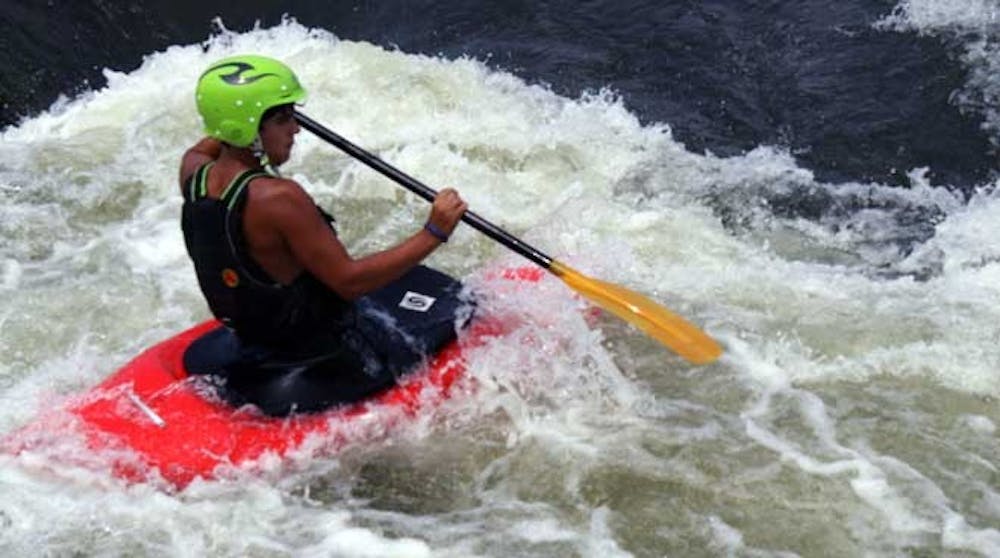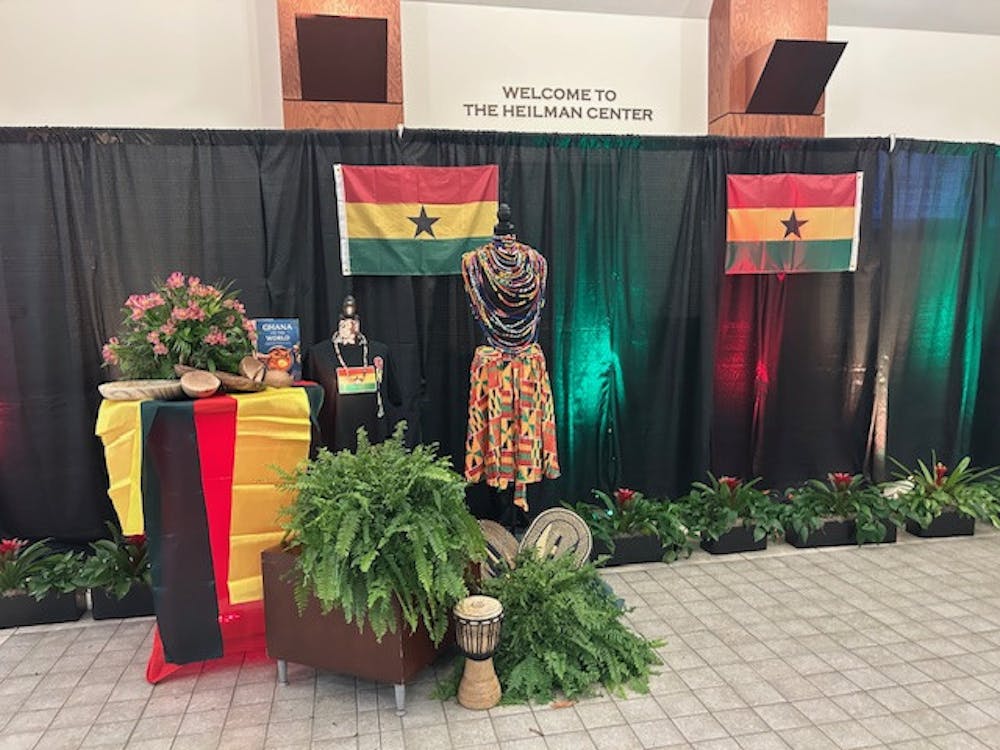I'm in the air about 100 feet above the clear water of the James River. The pedestrian suspension bridge under Richmond's big, truck-noisy Lee Bridge leads me over to the sometimes eerie quiet of Belle Isle.
Runners sprint past me. It's a gray, humid weekend. Sweat rolls down my back as I make my way onto the 65-acre island - one of the 14 parks in the James River Park System. I'm here to discover why everyone raves about this place for its serenity and charm.
The corkscrew stairs at the bridge's end open up onto a field half covered in wild vegetation and half in tiny rocks. I ask myself, 'Why do people say that this is a beautiful island?'
The only intriguing thing on the horizon right now is park manager Ralph White, my guide. We will walk the one-mile loop trail around the island -- shaped, White says, like a "fat tadpole" -- to visit the Civil War prison camp site, the Hollywood Rapids, the Quarry Pond, the ruins of a hydro plant and the ruins of a 200-year-old iron foundry.
The weedy site I'm standing on was once the four-acre Civil War prison camp. Perhaps 1,000 Union soldiers died here, miserably. The actual number is uncertain - the North claims it was more, the South, fewer.
There was a dirt mound along an eight-foot-deep trench, instead of a fence here. If the prisoners tried to escape by running up the mound of dirt, they would be shot, White says. The mounds are still there.
From the diary of prisoner Zelotes A. Musgrave:
"November 15th: Belle Island. Very cold night. November 16th: Some of our boys got blankets which were issued by our government. November 17th: Belle Island is a lousy place. November 18th: Belle Island. The body lice are fat. November 19th: Belle Island, poor rations. No meat. November 23rd: Belle Island. Rotten beef issued to us."
Some nights were so cold that the men had to huddle for body heat. There were no tents or fires for warmth. White says the men would gather in a circle at night. In the morning the inner rings of men would still be alive, but the men who had been standing on the outer edges of the circle were dead.
"Ten, 12, 15, 20 guys every night, frozen to death in a circle," White says with a faint shudder. "What is interesting is how little the horror of this site is recognized."
The soldiers who died here were buried in a graveyard on Belle Isle, not far from the boundaries of the 'L' shaped prison site. Their bodies were later exhumed and moved to Richmond National Cemetery. A conversation with Mike Gorman, one of the historians at Richmond National Battlefield Park, comes to mind as White assures me that all the bodies were exhumed.
So is it possible that not all the bodies were removed?
Enjoy what you're reading?
Signup for our newsletter
"Oh sure! Did they get them all? No way. On the other hand, that section of the island, half of it is now in the river," Gorman had said.
We pass bikers and joggers, and it's surprisingly busy for a Friday morning. People aren't waiting to run, bike, canoe, kayak, swim, sunbathe, fish, rock climb or bird watch.
The Hollywood Rapids crash against big green, moss-covered rocks. The rapids are seven miles long and named for the cemetery across the horizon, Hollywood Cemetery.
The steepest falls are here at Belle Isle to Mayo Island - a one-mile distance with a height change of 50 feet. Out on the rocks in the middle of the rapids is the heart of Belle Isle; kayakers taking on the challenge of the rushing water and crashing waves in orange and red kayaks. The orange kayaker gets daring and turns back around to take on the rapids head-first, an adrenaline junkie looking for danger. And the rapids are dangerous.
One victim, White recalls, "had bleach blonde hair and red, red fingernails. She [came] by on an inner tube sitting on her boyfriend's lap. And just about there," White says pointing to a rock in the water, "she decides 'I ain't doing this.'
She got off his lap, like she was going to walk to shore. She went through right in here," he points again and continues, "and jammed her feet into a crack and she got stuck. All you could see were the tips of her bleached blond hair and those red fingernails.
"She got out by wrenching her feet back and forth, but she broke both feet."
At Dead Rock, located by the rapids, White says the band, Grateful Dead, used to drink and party after playing shows in the 80s. A graffito of its red and blue skull is painted on the rock to pay homage to the band. Young people party at night on the island now, too, though both alcohol and any kind of visit after dark are prohibited, White says.
Our path continues to Quarry Pond. Below the glass surface of the water is a whole ecosystem: largemouth bass, yellow perch, bluegill and bullheads. Young girls raised the funds to buy these fish and then put each fish in the pond with their own hands, White says.
A trio of young teenage boys who drank and pestered visitors to the island frequented Quarry Pond, White says. But the magic of the pond reformed them. One day the leader of the pack caught a catfish, and fell in love with the gill-bearing kings of Quarry Pond. After that, they no longer bothered the island's visitors, White says.
White and I walk deeper into Belle's woods, secluded and surrounded by rock walls. White leads me down the steep, stone staircase leading to a hydro plant built in 1904. Water used to run through three turbines inside what is now a ruin, to produce electricity, he says. The walls are covered in graffiti of night artists: 'Chris,' 'Last' and 'Welcome to God's House.'
Nearby, the ground is covered in pieces of iron slag. I pick them up, the fragments of the Iron Rolling, Milling, and Slitting Manufactory. I can see where the iron slag has frozen mid-drip, like large, molten teardrops. The factory began in 1815 and specialized in horseshoe and nail production.
In the early 19th century there was a racetrack on the isle, owned by James Bell. He made his fortune by notoriously running a cultural hotspot for men, who came to indulge in drinking, gambling and whores. Eventually their wives could no longer tolerate "Bell's Hellhole," as the island became known. The women worked to have James Bell thrown out and renamed the island Belle Isle, or "pretty island."
As I come to the end of my time with White and his "pretty island," one fact becomes clear; his dense white beard must hold all the secrets of Belle Isle, because if she had a voice, it would be him.
Contact writer Marina Askari at marina.askari@richmond.edu
Support independent student media
You can make a tax-deductible donation by clicking the button below, which takes you to our secure PayPal account. The page is set up to receive contributions in whatever amount you designate. We look forward to using the money we raise to further our mission of providing honest and accurate information to students, faculty, staff, alumni and others in the general public.
Donate Now



